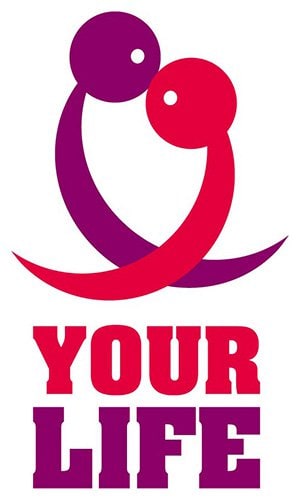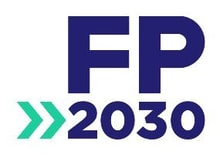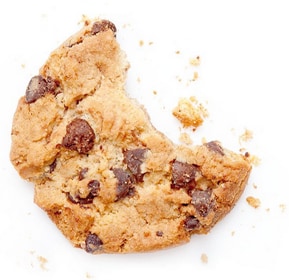Posted on: May 27, 2019
One date you definitely don’t want to miss out on is 28th May – Menstrual Hygiene Day Blast from the past: Female hygiene throughout history and why being a girl today rocks One date you definitely don’t want to miss out on is 28th May – Menstrual Hygiene Day. It is a crucial time for women to come together to break the taboos that still exist in some cultures and raise awareness about the lack of access to sanitation facilities and hygienic menstrual products in developing countries.

Periods get a bad reputation and, sadly, some girls and women still feel ashamed about having them. But actually, they’re one of the most natural things in the world. They tell girls and women that everything’s working well and that one day, when the time’s right, they’ll be able to create life. Go girl! Menstrual Hygiene Day is all about removing some of the taboos that are still around in some parts of the world. The goal is to raise awareness for issues such as providing access to sanitary products and fostering an open-minded perspective towards menstruation. Things were even more difficult in the past. Check out what many of our mothers, grandmothers and great-grandmothers had to put up with and how menstrual hygiene products have changed throughout history.
Ready for this?
Imagine a world where periods were even more of a taboo subject across the globe than they are today. A time when the majority of women couldn’t talk about them, couldn’t get information from healthcare providers and had to find their own ways to stop any leakages. Some of their solutions were OK, others… not so comfy. Here’s a short history of how our ancestors coped. [1] And they all prove that for all the great things that have already been achieved, there is still a lot of work left to do to battle stigmas associated with periods.
1800s: Women pinned cotton and flannel into their bloomers.
1850s: Warning – this is pretty gross – women used a kind of rubber apron to collect their blood. Talk about heavy, melly and uncomfortable! Respect to those poor women.
1896: Things got a bit better. The first sanitary towels were invented but, get this, women were too embarrassed to buy them.
1920: Kotex produced pads from a cotton-acrylic blend that had been used for bandages during the first World War.
1922: The first menstrual belts were patented. These helped keep the pads in place.
1930s: Leona Chalmers created the first menstrual cup. Good idea, bad timing. Women just weren’t comfortable with the idea of touching blood.
1931: A majorly important year for female freedom – thanks to a man called Earle Hass. He created the first modern tampon as we know it – with a cardboard applicator. In the same year, Gertrude Tendrich bought the tampon patent and founded Tampax. Weirdly they were only advertised to married women because the assumption was that they could make girls lose their virginity. But that’s not true.
1969: Remember those menstrual belts? Well now you can forget them. Finally, in 1969 the first pads were produced with adhesive strips.
1972: With the rise of the Women’s Movement, competitors started to produce pads that played on the idea of bodily and political freedom.
1975: Tampons had a technological make-over. A new superabsorbent tampon, called Rely, was invented. Unfortunately, the synthetic components were linked with toxic shock syndrome in some women and Rely was withdrawn.
1985: The word “period” was actually spoken out loud in a TV ad for the first time! Sounds trivial now but that shows how far we’ve moved on.
2000s: The early 21st century saw a revival of the menstrual cup. These updated, reusable latex and silicon cups are easy to use, clean and also help reduce waste since they can be used again and are not meant to be thrown away as e.g. tampons.
2017 and counting – Pick ‘n’ Mix
With today’s range of menstruation products, girls and women can find an option that suits them whether it’s their first or their last period. We probably take modern day slim pads, with their adhesive strips and moisture-free cotton textures, for granted. But they’re a modern masterpiece. They come in a choice of sizes and absorbencies, depending on the flow, and they’re completely invisible under clothes. Tampons are just as amazing. They’re easy to fit, hygienic and – despite any horror stories you might have heard – very safe. They won’t fall out, get stuck or affect a girl’s virginity.
If you like the idea of the reusable menstrual cup, you’ll be reassured to know that – after a bit of practice – they’re easy to fit, comfortable and stay in place for up to 12 hours. If you need any advice, just speak to your healthcare provider and they will help you find a solution that works best for you and makes you feel comfortable. Another ‘green’ option is the sea sponge – available in disposable and reusable versions. Since they are made of a natural material, their disposal is sustainable. And when using reusable sponges, it even helps reduce waste similarly to menstrual cups. They can be tricky to remove without leaking though. Just saying.

So why do we need a Menstrual Hygiene Day?
Sadly there’s still work left to do to raise awareness, fight period shaming and make sure that girls and women get access to these modern day hygiene products. The taboos need to be shattered, information needs to be shared and women need to be empowered. Did you know, for example, that according to UNESCO, 1 in 10 girls in Africa miss school during their periods, which directly affects their education? [2] In rural Nepal, women and girls are forced to sleep in separate sheds when menstruating. [3] While things have improved so much in the western world, it’s crucial that we do all we can to fight for women’s and adolescent girls’ self-esteem, health and education all over the globe.
References
- Source: http://www.womenshealthmag.com/health/period-products-through-the-years Source: http://www.womenshealthmag.com/health/period-products-through-the-years Return to content
- Source: https://blogs.worldbank.org/education/globally-periods-are-causing-girls-be-absent-school Source: https://blogs.worldbank.org/education/globally-periods-are-causing-girls-be-absent-school Return to content
- Source: https://www.researchgate.net/publication/318393272_2017_SCOPING_REVIEW_AND_PRELIMINARY_MAPPING_Menstrual_Health_and_Hygiene_Management_in_Nepal_Population_Services_International_Nepal Source: https://www.researchgate.net/publication/318393272_2017_SCOPING_REVIEW_AND_PRELIMINARY_MAPPING_Menstrual_Health_and_Hygiene_Management_in_Nepal_Population_Services_International_Nepal Return to content




















